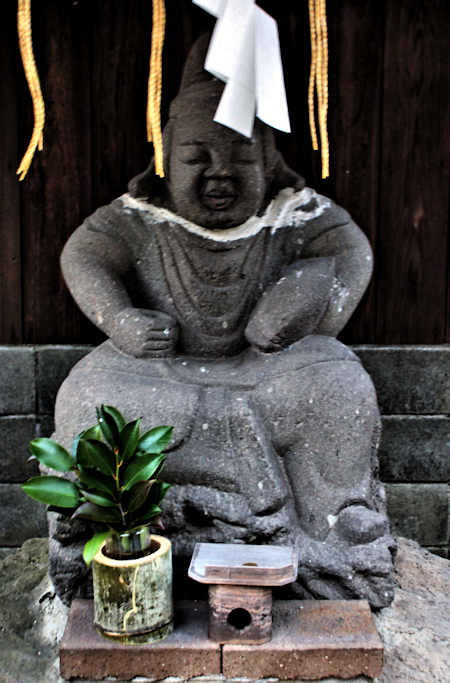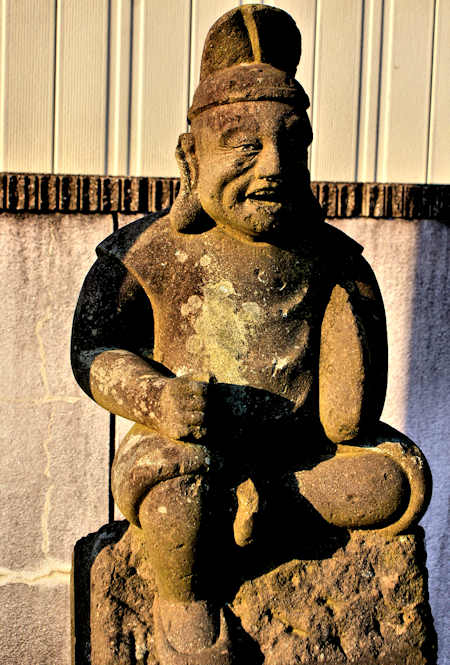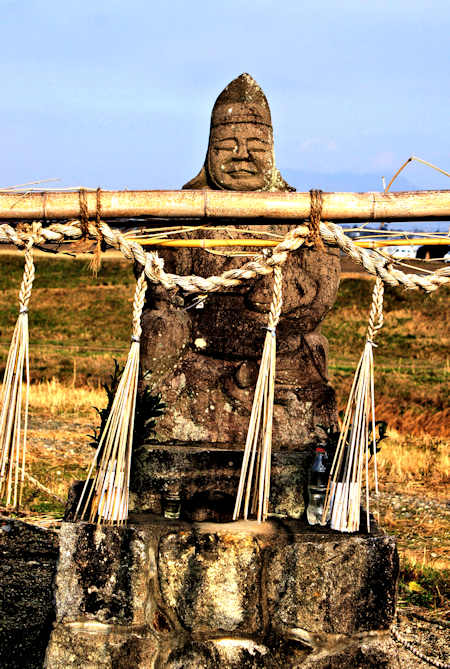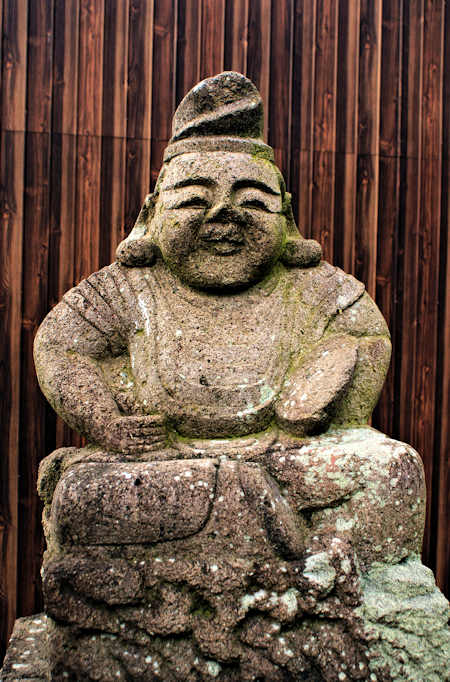The route I will be following is eastwards up the Chikugo River on the south side towtds Hita in Oita. It was a major transportation route in the Edo Period sometimes called the Hita Kaido, sometimes the Bungo Kaido.
What became apparent after only a few kilometers of walking were the large number of Ebisu statues along the route.
Ebisu was primarily a kami connected with fishing and whaling. In many parts of the country every little fishing harbor will have a small Ebisu shrine.
In the Edo Period, with the rise in popularity of the Seven Lucky Gods, of which Ebisu is a member, he also became associated with business success.
Along this route I found Ebisu statues in every little shrine, on the sidewalk in the villages, and alongside the rice paddies.
I know that along the Nagasaki Kaido as it runs through what is now Saga there was a cult of Ebisu, and as the Nagasaki Kaido connects with the Hita Kaido, maybe this is an extension of that cult.










































